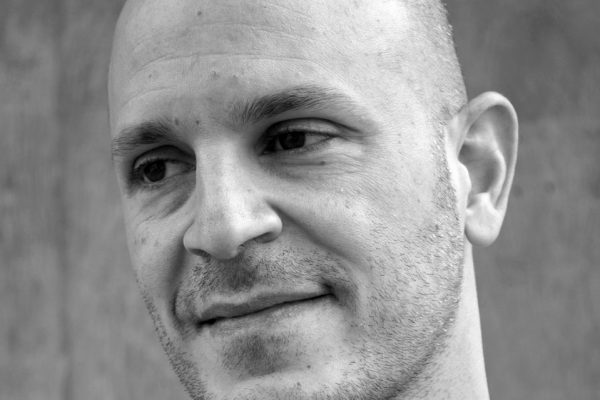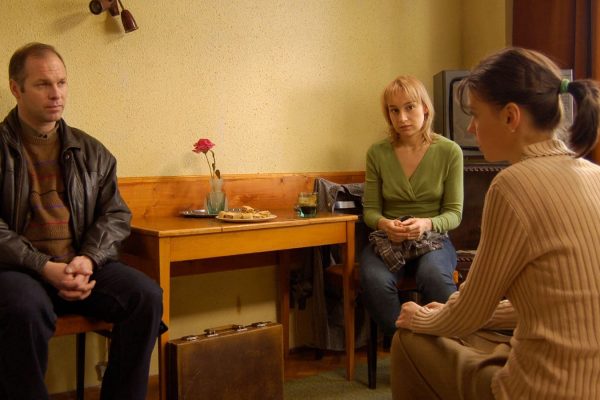
Jan Sanders van Hemessen, The Surgeon (1555)
Extracting the Stone of Madness:
Poems 1962–1972
Alejandra Pizarnik, Yvette Siegert (trans.)
New Directions, $18.95 (paper)
In her book Dark Museum (2015), Argentinian critic and poet María Negroni provides this description of the Gothic: “Between ideology and crime, the Gothic opts for an epic of intensity, one that rehabilitates madness as a via negativa even as it posits improbability as an antidote to transcendence.” The darkly beautiful poems of the great Argentinian writer Alejandra Pizarnik (1936–1972) generate an immersive, Gothic atmosphere in which art is both violence and respite, contamination and antidote, hell and paradise. If it is true, as Calvin Bedient argues in “Against Conceptualism,” that we live in an era when “concept has trumped feeling,” then Pizarnik’s poetry is a welcome antidote—dramatic, brutally affecting, and saturated.
The intoxicating new volume Extracting the Stone of Madness, translated by Yvette Siegert, brings together Pizarnik’s last three collections—Works and Nights (1965), Extracting the Stone of Madness (1968), and A Musical Hell (1971)—as well as the collected work published after her suicide in 1972. Together with Diana’s Tree (published by Ugly Duckling Presse in 2013, also translated by Siegert), a work many consider Pizarnik’s masterpiece, these books collect the fiercely gorgeous poems written during and after the young poet’s four-year residence in Paris, where she read the work of many French writers (Arthur Rimbaud, Antonin Artaud, the Surrealists, Marguerite Duras). She also read the Uruguayan visionary Comte de Lautréamont and developed important friendships with fellow Latin Americans living in Paris at the time, including Octavio Paz and Julio Cortázar. The influence of these writers is palpable in Pizarnik’s increasingly hallucinatory imagery and intensified emotional register.
From the first page of Works and Nights to her last poems, Pizarnik returns again and again to a space of “night” and “death,” an obsessive repetition that turns her work into what Negroni calls an “architecture of excess.” As a Gothic castle keeps adding room after room, Pizarnik piles up line after line, image after image. Hers is not the American ideal of what literary critic Cleanth Brooks, alluding to a line from John Donne, called the “well wrought urn.” Instead, Pizarnik’s maximalist writing shatters ideals of economy. This is not poetry that you “get” and then move on from; it is poetry that opens up a violent space in which you must linger and struggle. In contrast to the “project” book or poem based on a single concept to be contemplated at a distance, Pizarnik’s writing must be undergone: poetry as immersive experience.
Death, the ultimate absence, is the most present word in the volume. It speaks the writer’s self into existence and destroys her.
Pizarnik’s accumulation is dynamic rather than static, in part as a result of her use of apostrophe, the figure of speech through which the poet addresses an absent or abstract interlocutor. Throughout the poems, the speaker wrestles with a “you,” at times commanding him/her, at times submitting to him/her. This “you” might be conceived of as the reader, as simply another person, or—perhaps most importantly—as the writer herself: the “I” as “you.” If “I” is the writer, it is the writer separated from herself, a stranger to herself—a dynamic that is reflected in the many dolls and “dead girls” that seem to stand in for the poet throughout the book:
A naked mannequin in the wreckage. They set fire to the store window and left you posing like a frozen angel. I’m not making this up: what I’m saying is an imitation of nature, a still life. I am speaking of myself, naturally.
One might see in this volatile sense of identity an elaboration or dramatization of Rimbaud’s famous dictum “I is another.” Though it may have become commonplace for American experimentalists to critique the supposedly stable “I” of lyric poetry, Pizarnik, in sharp contrast, delves into the inherent volatility of writing with an “I.” Or, as she writes in one poem, “If I am anything, it is violence. / The colors scratch against the silence and make decaying animals.” Here “I” is itself violence, a violence that is also the site of art (the “colors” that “scratch”). Pizarnik continues: “The poem is a space and it hurts. / I am not like my doll, who only feeds on bird’s milk.” Not only does the poem “hurt”; it also generates. But that generation—to complete the loop—takes place through negation: the speaker’s doll-double makes the “I” feel absent as well as hungry, ready to devour much more than that trickle of bird’s milk. In the violent space of art, the identity of the poet is at once created and ruined. There is nothing stable about this breakneck “I.”
Both Works and Nights and Diana’s Tree explore the linked volatility of art and identity in short, almost aphoristic fragments that invoke motifs of death, night, and silence. Here is the poem “Silences” in its entirety:
Death always at my side.
I listen to what it says.
And only hear myself.
Through repetition and accumulation, the absences of “night” and “death” paradoxically become highly present. Death, the ultimate absence, is the fullest, most present word in the entire collected volume. Silence not only threatens; it also burns, blossoms, and speaks. It speaks the writer’s self into existence and destroys her in the “frenzied absence of the blank page,” as the “blank” space becomes oversaturated with the poetry of this maelstrom, “this battle with words.” The title’s plural “silences” suggest this volatile relationship between presence and absence.
In the volumes Extracting the Stone of Madness and A Musical Hell, Pizarnik’s fragments grow into long prose poems that feel simultaneously essayistic and dramatic. One might think of these prose pieces as many aphorisms pressed together, intensifying the constant conflicts (between silence and song, death and existence, I and not-I) that constitute her earlier epigrams. These later poems are full of uncertainty, throwing the reader (as well as the writer) into a confounding but also intimate struggle. During the span of a single poem, the speaker changes her mind over and over again:
If only you could see the one who is sleeping without you in the ruined garden of my memory. There I am drunk on a thousand deaths, telling myself about me, if only to see if it’s true that it’s me lying there beneath the grass. . . . What is happening in that green grove? It so happens that it is not even green; there isn’t even a grove. . . . On a white wall, you draw allegories of rest, and they’re always of a mad queen who lies beneath the moon on the sad lawns of an ancestral garden. But don’t speak of gardens. Don’t speak of the moon.
Here, “I” sleeps without the addressee in the poet’s “memory,” but the poet is also “drunk on a thousand deaths” (once more absence is proliferation), suggesting that she—not the addressee—is the absent one. Of course there is also that recurring sense that “I” is “you”: the addressee who “wish[es] to be someone else.” Not only is “I” multiple, but the grove “isn’t even a grove.” The poem is undoing itself, but its undoing is its genesis. Pizarnik interrogates her own language as she uses it. Perhaps this is what it means to be in the beautiful but devastating “hell” of language and art.
While Pizarnik’s poems consistently present an “I” surfeited and even capsized by lyric urgencies, the figure of music represents the beguiling force of poetry itself. Throughout Extracting the Stone of Madness, Pizarnik uses “music” to describe the aesthetics of that which interrupts through its intensity: “It is music, it is death.” This night music reaches its apotheosis in the last book, A Musical Hell. This “musical hell” is a little like Jack Smith’s notorious underground film Flaming Creatures—visually opulent, simultaneously paradisal and infernal, utterly immersive:
So many merging dreams, so many possessions, so many immersions into my dead-little-girl possessions in the garden of lilac and ruins. Death is calling me down by the river. With a torn heart, desolate, I listen to that song of purest happiness.
In ecstatic states, it may not be clear whether we are in paradise or hell, whether the song is happy or sad. This is the experience Pizarnik describes even as she propels herself into its drunkenness, creating a saturated atmosphere that is, as Negroni puts it, the “antidote to transcendence.” Or it might be a kind of anti-transcendence, found precisely in the negation of transcendence, the refusal to elevate poetry into “concept.” Her poetry feels like a constant, intensive refusal that generates its own Gothic beauty and black light: “imminence without a recipient. I see the melody.”
• • •
We might wonder how a poet of Pizarnik’s stature—a poet whose style Raúl Zurita has called “arguably the most imitated and admired by young Latin American poets”—could have received so little attention in the United States. Before Siegert’s translations were published, English readers were limited to the now-out-of-print Alejandra Pizarnik: A Profile (1987), by Frank Graziano, and to Susan Bassnett’s hybrid experiment, Exchanging Lives (2002), which includes Pizarnik’s poems in Bassnett’s translations alongside Bassnett’s own poems, showing how the act of translating Pizarnik influenced Bassnett’s writing. Perhaps the U.S. critical silence simply reflects the fact that few foreign poets are translated into English. But I believe there is something else going on.
In the 1960s, Robert Bly and his cohort of poets and translators, all deeply influenced by Latin American art, shaped the U.S. canon of modern Spanish-language poetry—“Spanish surrealism,” as Bly called it. The poets they translated were mostly men, giving that canon—as well as the reading expectations that accompanied it—a distinctly masculine cast. This climate would have been hostile to Pizarnik’s work.
But her flowery, dramatic poems might also have come a little late. In the 1970s, U.S. poetry turned away from surrealism and extravagance to a more austere style (whether narrative poems about personal memories or experimental poems that rejected figurative language entirely), and by the ’80s, U.S. discussions of poetry in translation focused on a “poetry of witness,” a phrase most famously used by Carolyn Forché in her 1993 anthology Against Forgetting. The extravagance of foreign poets was explained by their direct experience of political oppression. This frame would not work for Pizarnik, who died before the coup in Argentina. Indeed, it is hard to fit her into any single context, this queer poet and child of Jewish immigrants who was born in Buenos Aires but spent formative years in Europe.
Yet perhaps the most compelling explanation of her long invisibility in the United States is that Pizarnik is the kind of poet—like Sylvia Plath, to whom she is often compared—who overwhelms, who puts us under her spell, who drives “the young” to write flowery verse. It is these features of her work that make her so troubling for a U.S. poetry still so intent on control, mastery, economy, and the agency of the poet. Pizarnik explodes the pervasive Anglo-American ideal of moderation, and out spills a tide of avatars and addressees under the glamour of her necrotic moon.








